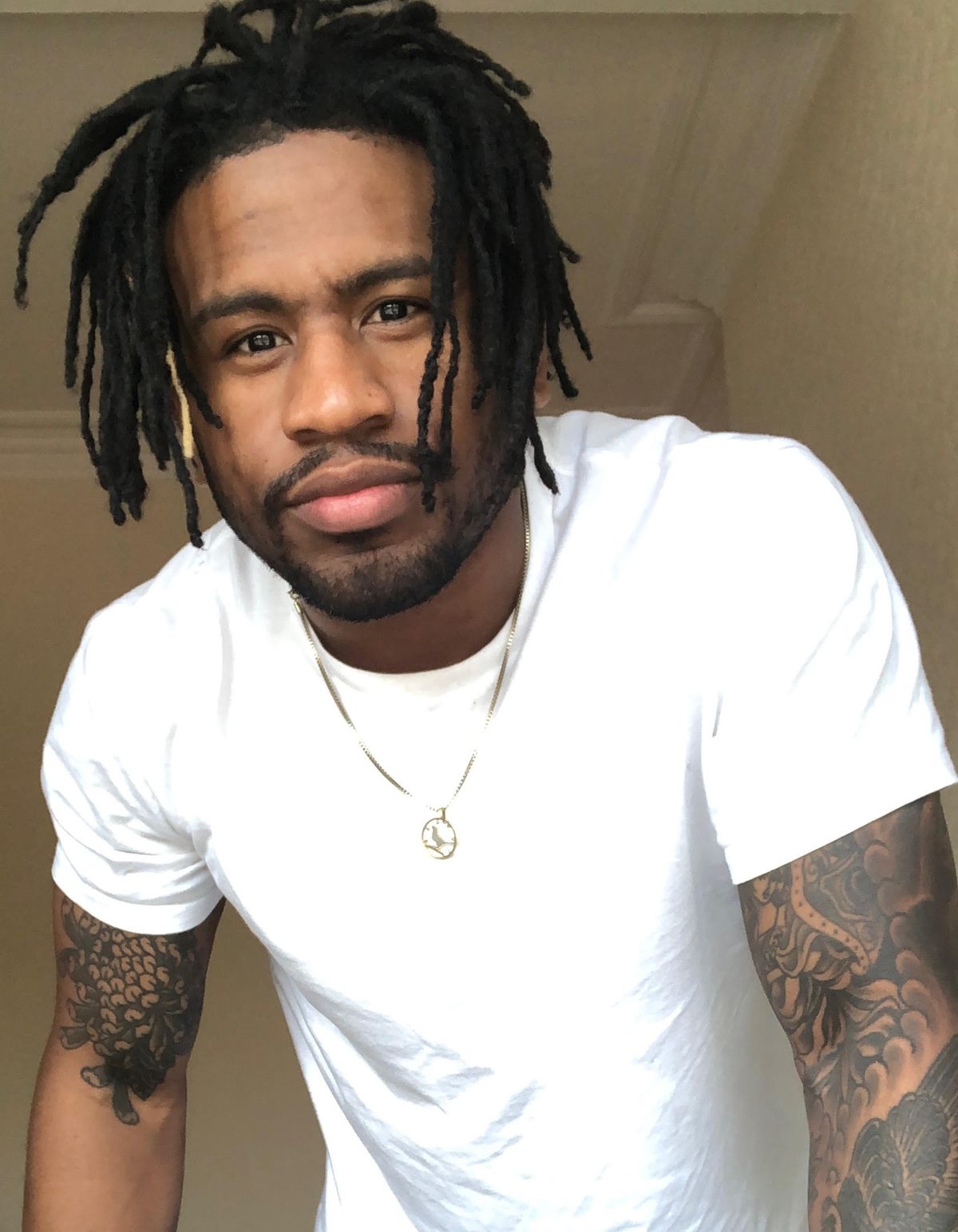The 16 artists of color behind the Black Lives Matter mural

On a recent sunny afternoon, Tina Stevens, a blond, 50-something middle school teacher, hopped out of her car in the parking lot at the Seven2 digital ad agency downtown. She wanted to get a closer look at the enormous Black Lives Matter mural.
“I’m just glad Spokane is supporting the Black community in a very visible way,” said Stevens, who said she had wanted to stop by to see the mural on her way to pick up an order at Auntie’s Bookstore down the street. “I still have some friends who say ‘all lives matter.’ I don’t know what will make them understand. They have a different mindset. They need to read.”
Stevens’ favorite letter is the “A” in the word “Black” painted by Maasai artist Nicolas Sironka. A Spokane resident originally from Kenya, Sironka has filled his letter with the lively figure of a drummer in traditional tribal dress. Stevens fondly recalls taking a batik class from Sironka at the Northwest Museum of Arts & Culture back when such workshops were possible.
Sironka said his painting is dedicated to the strong spirit that moves the African American, and all Africans, throughout the world. “This is the heartbeat of every person of African heritage,” Sironka said. “Hence the drummer!”
Sironka’s joyous figure belies his heavy heart. “I have not been able to get the image of that cop kneeling on George Floyd’s neck (out of my mind),” Sironka said. “Can’t a citizen just risk his or her life, and even die, to save that man? Don’t just film. Do something!”
The nonprofit arts organization Terrain handpicked 16 artists of color to paint the 16 letters of the mural. Carl Richardson created the “B,” Sarah Torres the “L,” Sironka the “A,” Amber Hoit the “C,” Shantell Jackson the “K,” Bob Lloyd the “L,” Israel Blackwell the “I,” Brandon Johnson the “V,” Jun Oh the “E,” Emma Noyes the “S,” Reinaldo Gil Zambrano the “M,” Brittany Trambitas the “A,” Jiemei Lin the “T,” Asia Porter the “T,” Remelisa Cullitan the “E” and Daniel Lopez the “R.”
“I spent quite a bit of time plotting out which artist was assigned what letter mainly to ensure that we had a wide range of artistic styles and that those styles were dispersed throughout the entire piece,” said Ginger Ewing, Terrain’s executive director.
“One artist mentioned that it felt like they were tapping into each other’s psyches, or a collective power, given the common themes, colors and deeper messages that emerged … all independently of one another.”
Spokane native Cullitan, who mostly works in ceramics, is development coordinator for Volunteers of America and a longtime arts advocate. The 31-year-old was given the letter E, which she used to paint a tribute to the Black transgender women, men and nonbinary individuals who were murdered by police and civilians over the past five years.
“Honestly, I was intimidated by this project,” Cullitan said. “There is so much to say and so much to depict visually. From the beginning, I knew I wanted to focus on names. … It is humanizing to say their names, to display their names and remember their names.”
While the public response to the mural has been overwhelmingly positive, according to participants, there have been several hecklers. President Trump himself has called Black Lives Matter a “hate group.”
When local Latino printmaker Zambrano was painting his letter, he was hounded by a man from far off, repeatedly crashing a small remote car into the scissor lifter the artist was using to hoist himself up high on the mural wall. The man yelled at the muralist, “I won’t apologize for being white!”
“During this, I was constantly thinking this person must be so lonely and sad that the only way he can get attention or be able to express his opinion is by provoking others and seeking conflict,” Zambrano said.
“We live in times of much tension, and to be heard is something everybody is seeking. But not everyone is willing to be the listener and be open to other people’s realities.”
The realities of dealing with law enforcement as a Black person in America is not an easy one to face, according to a teacher who stopped to take pictures of the art. “I think that some people are open to this message (about police brutality) who never really thought about it before,” Stevens said.
“The George Floyd tape made a huge difference. You hear about things happening and you say, ‘Well, maybe he shouldn’t have been doing what he was doing.’ But that tape shows he was handcuffed and not resisting, and still they were on his neck. It’s not right.”
“I think it’s important to note that the more the mural gets filled in, the more negative energy people were bringing has waned,” Ewing said. “The beauty of the work … to witness (the artists’) hearts and their souls, makes it harder and harder to deny their humanity.
“This is more than a mural. … It’s helping to heal.”